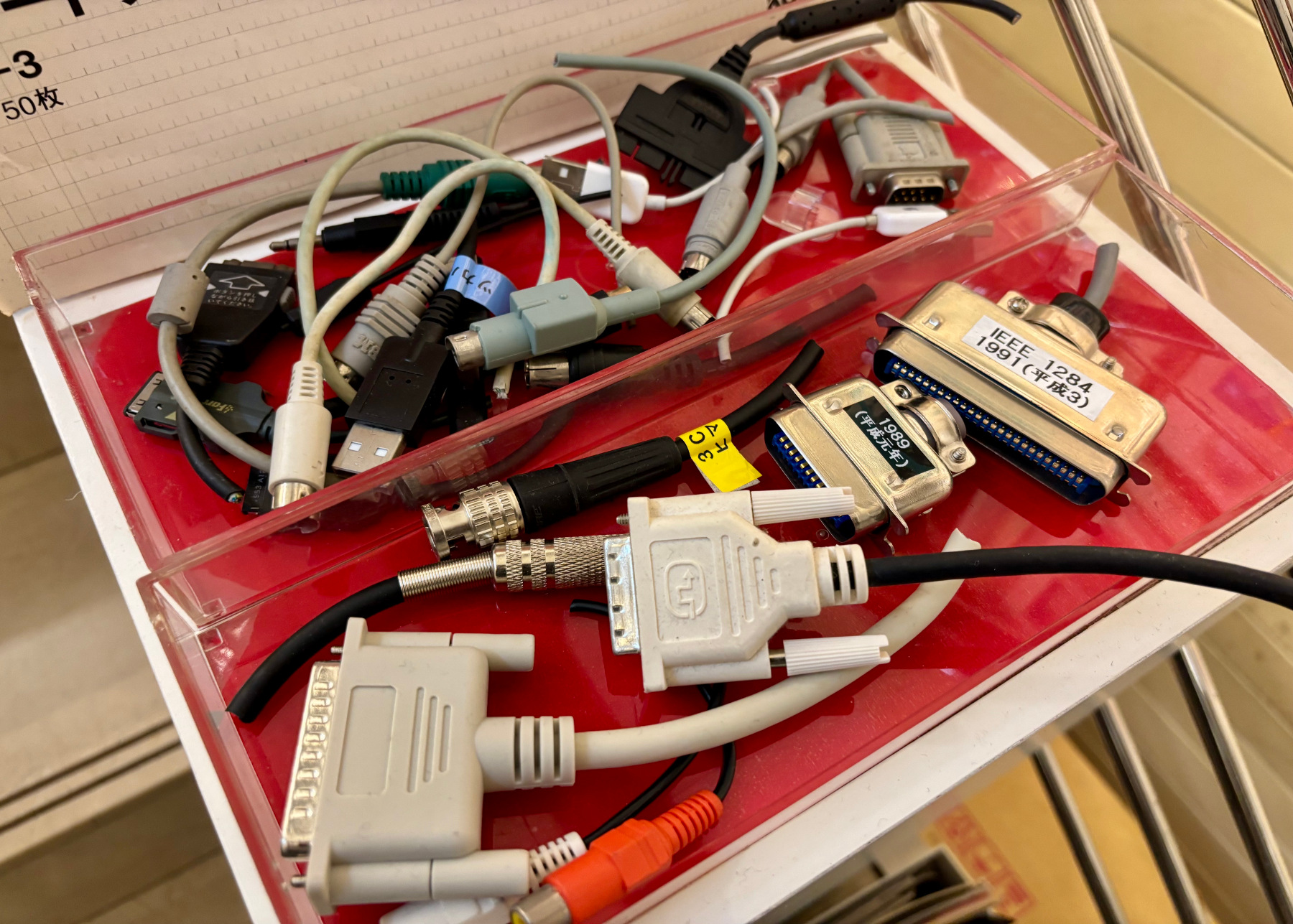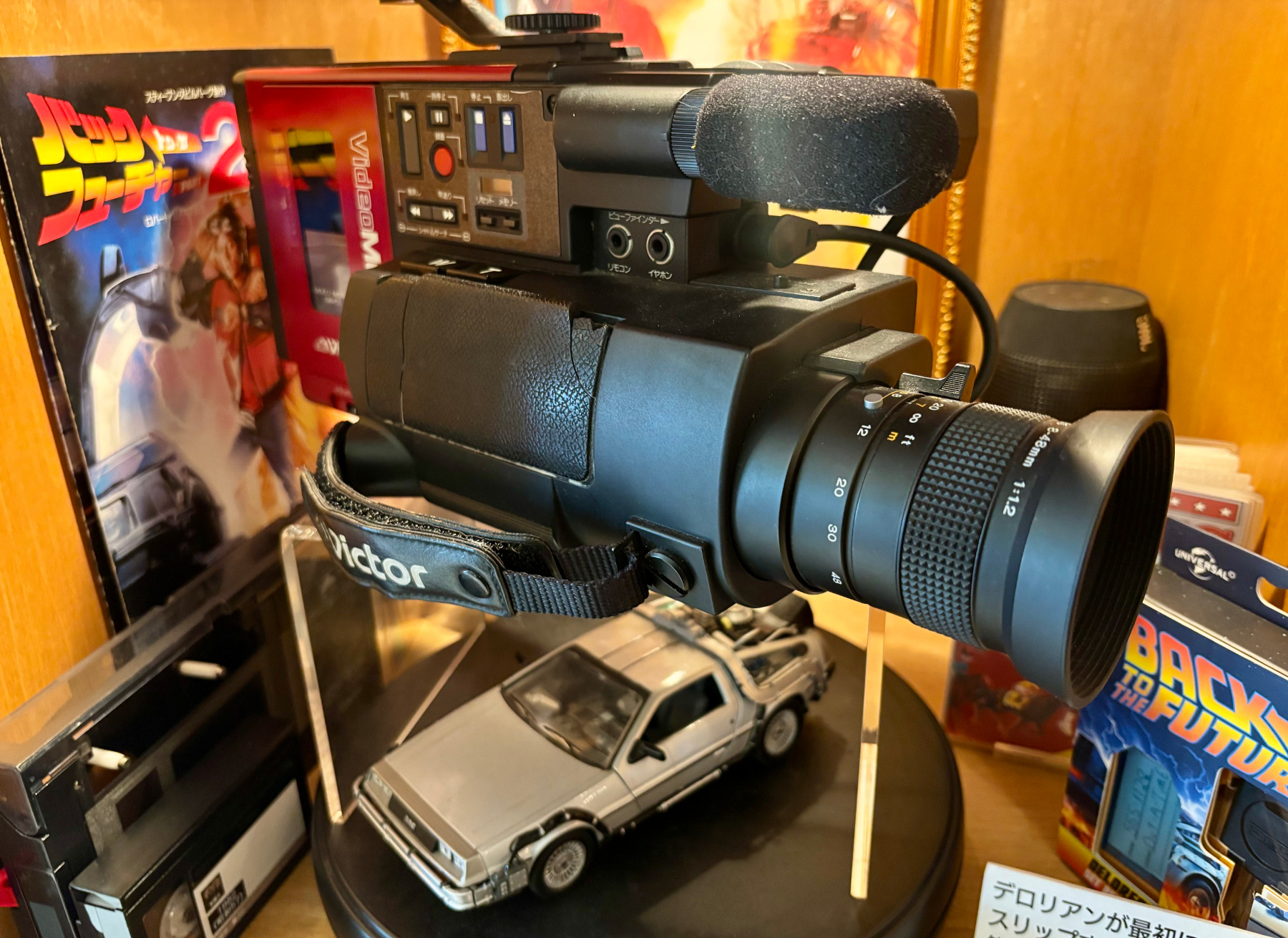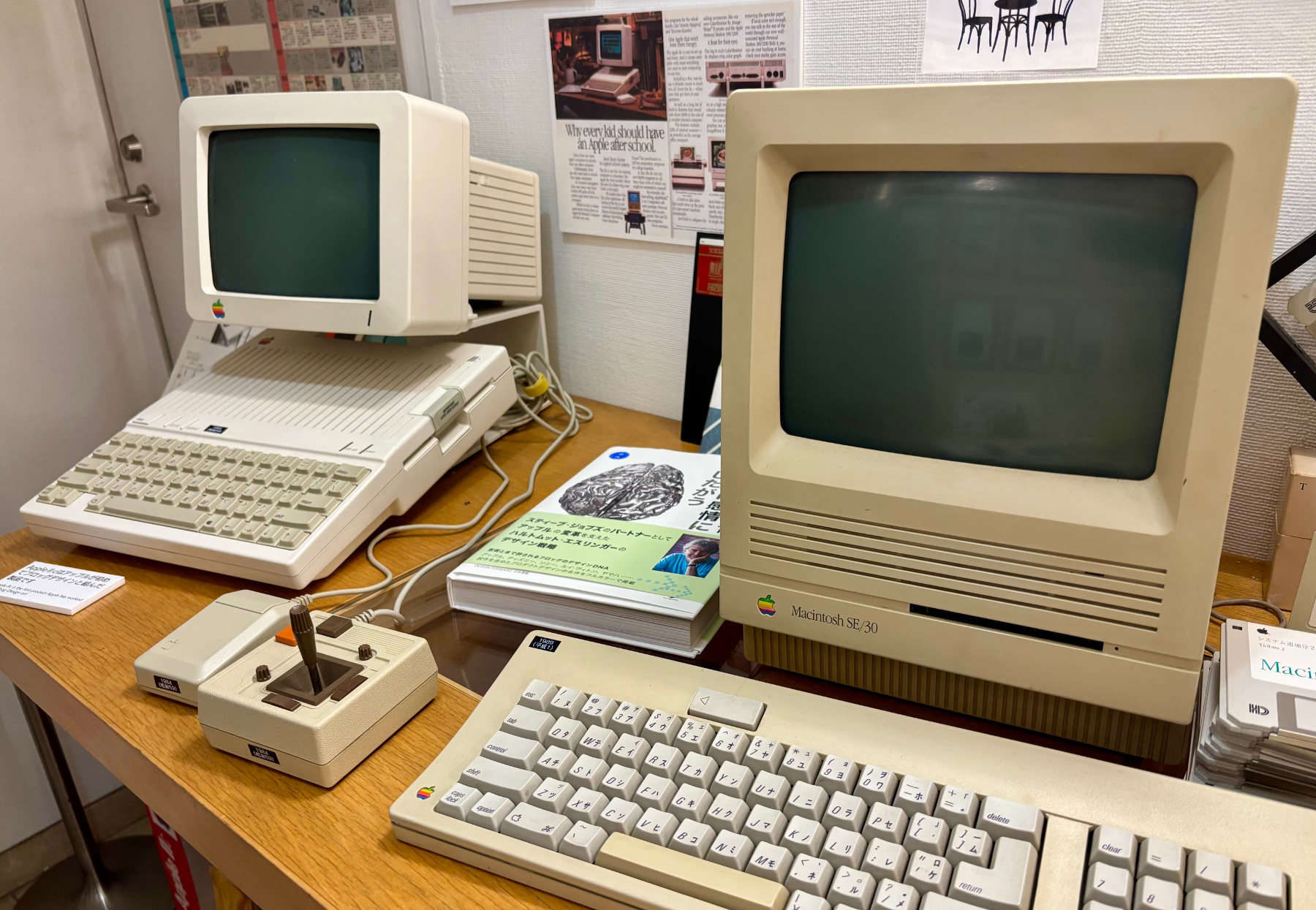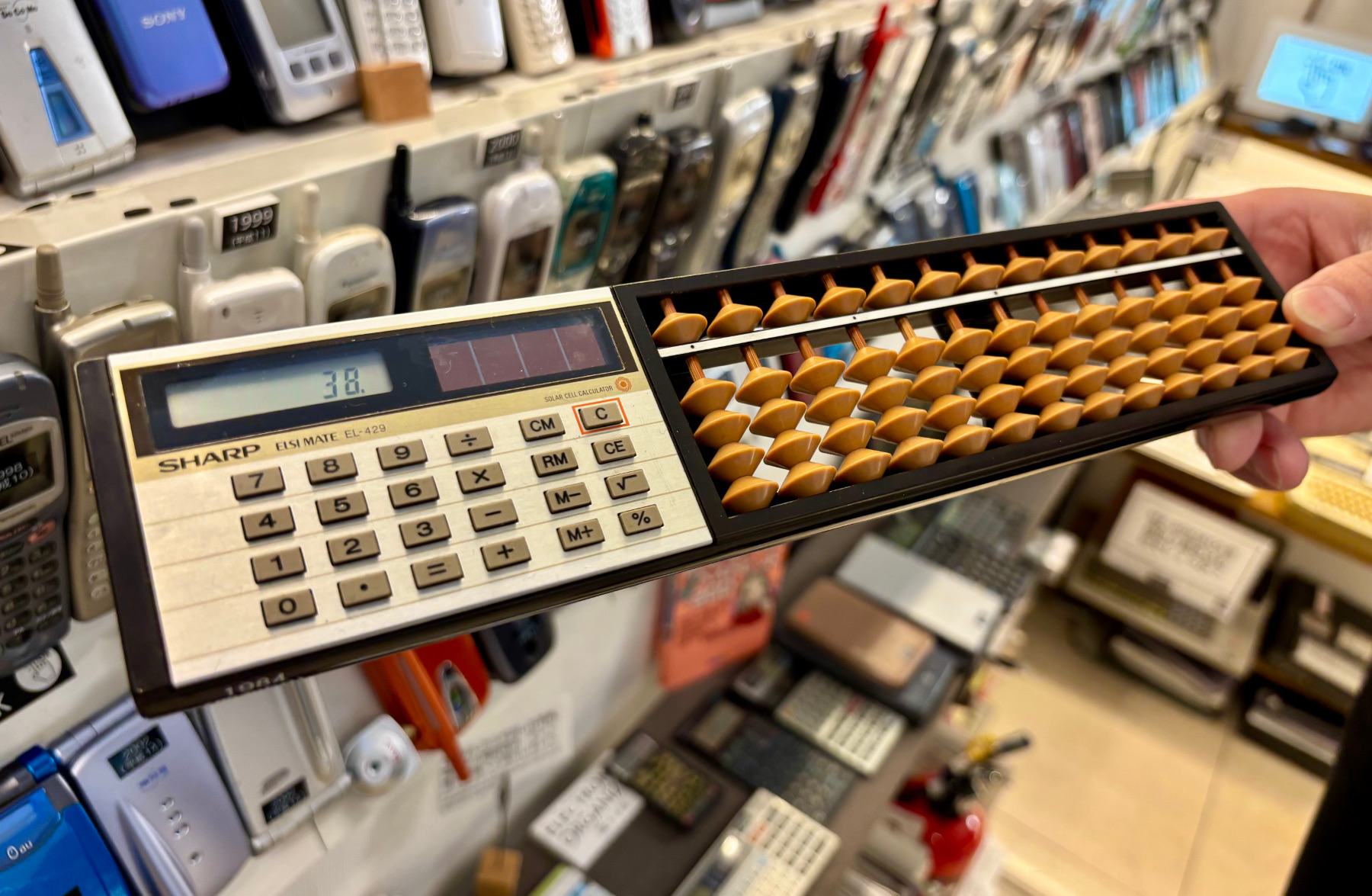“We are analog beings living in a digital world, facing a quantum future,” physicist Neil Turok wrote in his 2012 book The Universe Within. The deluge of digital information we face every day “feels rather alien to us as natural, living creatures,” he later explained. If that’s true, it may be one reason why visiting the Extinct Media Museum in Tokyo, Japan, feels so relaxing.
The compact collection is a shrine to recording and storage media of yesteryear, both analog and digital, as well as the devices used to record and play them back. It has a colorful hoard of 8mm and 16mm films, floppy disks, VHS and cassette tapes, reel-to-reel tapes, 8-track tapes, mini-discs, Betamax, laserdiscs, and more. The shelves are also stuffed with yesterday’s recording, photography, communications, and computing devices. Nestling alongside Double 8 cameras are retired clamshell phones, a Macintosh Plus, early iPods, the first iMac, Panasonic audio players, and a spaghetti of vintage cable interfaces.

“Since the first iPhone, smartphone design has been basically the same, but before that, feature phones had many interesting designs, and you can see them here,” said deputy museum curator Barbara Asuka. “While manufacturers have their own museums to display their own products, we have many brands that visitors can compare.”
In Japan, antiquated technologies retain currency. Fax machines are still common, business cards are still de rigueur, and 60% of all transactions were still done in cash in 2023. The following year saw the central government finally end its use of floppy disks. Personal seals (hanko), a technology that’s at least 3,000 years old, are still used on legal and banking documents.
Hands-on hardware
The museum isn’t a collection of antiques gathering dust, though. Visitors are encouraged to pick devices up and try them out. You can wind the crank on an old 1950s film camera, hit the keys on an Olivetti typewriter, handle a clamshell mobile phone from the 1990s, feel the heft of a shoulder-mounted Victor GR-C1 video camera (the model used in Back to the Future), and hear the whir of a Poppy Kurukuru Terebi film viewer as it plays an Ultraman reel.

“People of my generation come here not only for the nostalgia factor when seeing devices they used as kids, but to relive memories of when Japan was a high-tech leading nation,” said Yoshiyasu Kubota, 56, an electronics engineer and researcher affiliated with the museum. “Younger people come here to discover technologies they’ve never experienced before, like cassette tapes.”
At the museum, I took my own trip down memory lane when encountering an Apple IIc, my first PC and Apple’s first portable computer. I remembered swapping floppy disk video games like Ultima IV 40 years ago with classmates and hooking up the IIc’s video output to our old Zenith CRT TV to play in color instead of using its 9-inch monochrome monitor. Copying, labeling, and hole-punching blank 5¼-inch floppies to double their capacity was an essential analog experience in what quickly became my first digital playground.

Floppy disks are also on display at the museum, from 8-inch to 3½-inch, but they’re relatively new as recording media. The oldest piece in the museum is a made-in-Japan Lily bellows camera from 1916. An early hand-cranked film camera, the Pathé-Baby from 1922, stands near a box of film that came pre-addressed to Pathex Inc. in New Jersey for mail-in developing. It was a far cry from uploading video in seconds to YouTube or TikTok.
Rarities from yesteryear
There are also made-in-Japan gems: a 1977 Fuji Film 8mm reel of Star Wars in Japanese, a first-generation Walkman from 1979, the one with two headphone jacks for sharing music, and ceramic musical boxes with telephone handset cradles that would play melodies for callers on hold.

Another oddity is the Sharp Elsi-Mate EL-429 combination calculator and abacus from 1984. It had a small digital display, a solar-power cell, 24 buttons and 65 abacus beads. Why a hybrid abacus and calculator? When it was introduced, abacuses were still popular in Japan and people didn’t fully trust calculators, Asuka explained. Abacus calculation is still taught in Japan in the belief that it promotes mental and physical dexterity. Even in 2025, one can sometimes find elderly Japanese shopkeepers and merchants who use abacuses when tallying purchases.

For those studying the history of consumer electronics, the museum has many examples of devices that became “extinct” as casualties of a format war. One is the 1992 Sony NT-1 Digital Micro Recorder, a.k.a. the Scoopman. It had high-quality sound despite using SD card-sized cassettes certified as the smallest in the world for digital recording in 1994 by Guinness World Records. The Scoopman series and NT cassettes were meant to compete with the microcassette and mini-cassette but were discontinued after only two models as devices with internal drives were more cost effective. Now they’re fuel for nostalgia buffs in the museum.
“I’ve always loved gadgets, as Japanese home appliances such as radio cassette players and mini stereo systems were all the rage in the 1980s,” said Takuya Kawai, the museum’s founder and chief curator.
“My favorite device is a Double 8 camera from the 1950s. It’s simple and beautiful, and it’s amazing that it still runs on a spring,” he said. “It’s fun to see that the turret lens (a structure that rotates three lenses with different focal lengths) seems like the origin of the lens configuration of today’s smartphones.”
Kawai, a photographer and videographer, opened the museum in 2023, a 12-minute walk from Tokyo Station in the Kanda district. He had noticed people cleaning house during the Covid pandemic and discarding their old gadgets, so he put the word out on social media and donations began pouring in. The museum now has some 3,000 items, of which about half are on the shelves at any given time.
“I made recordings with 8mm, Betamax, and digital over the years, but eventually all formats fall out of use, and we can longer view the contents,” he said. “I thought it would be interesting to have a museum of these recent artifacts that have vanished.”
More than half of the museum’s visitors are from overseas, many writing words of gratitude in its guestbook.
“I’ve never been to a place like this before,” said Jay, an 18-year-old tourist from south India, in an interview. He is young enough to have never used most of the devices and media on display. “When I saw it online, I knew I had to visit when I came to Japan. I’m really interested in the history of MacBooks.”
Kawai mused that all media and media devices are ephemeral. In the distant future, an unearthed SD memory card may be as alien to archeologists as Sumerian cylinder seals are to digital natives. A banner at the entrance to the Extinct Media Museum reads: “All media other than paper and stone will become extinct.”
Tim Hornyak is a Canadian journalist based in Tokyo, Japan, who writes extensively about technology, science, culture, and business in Japan.